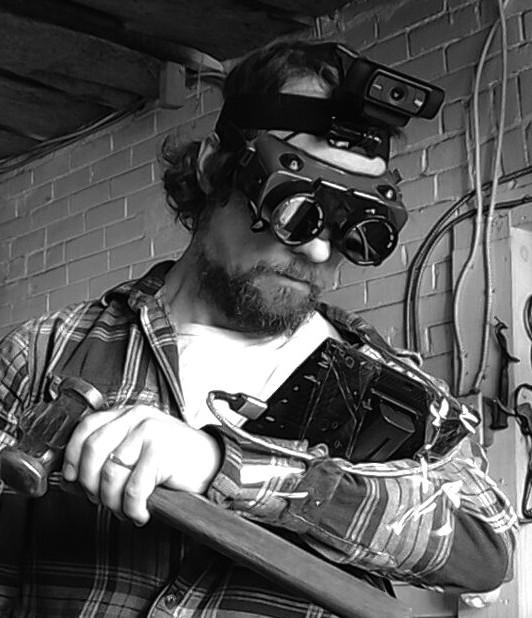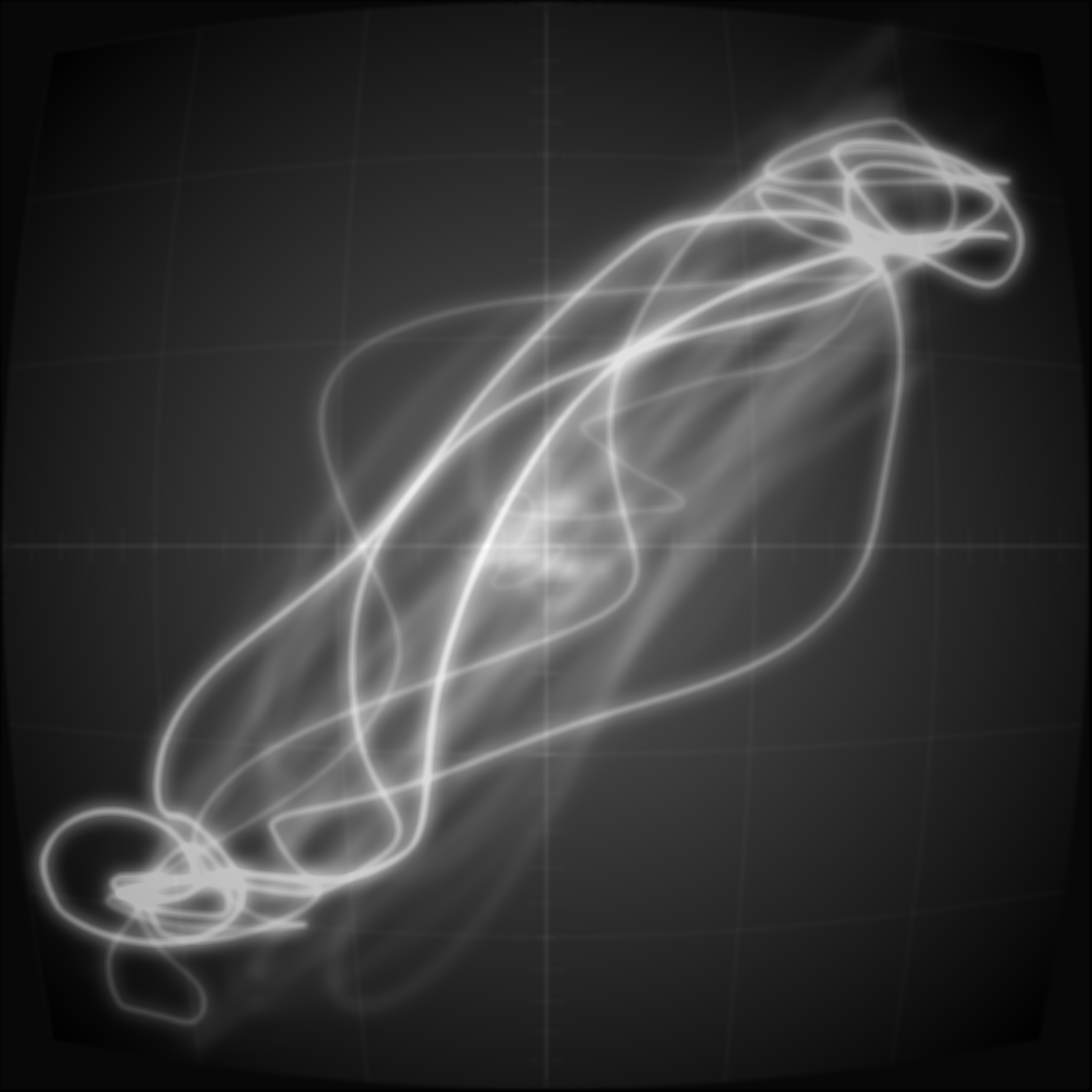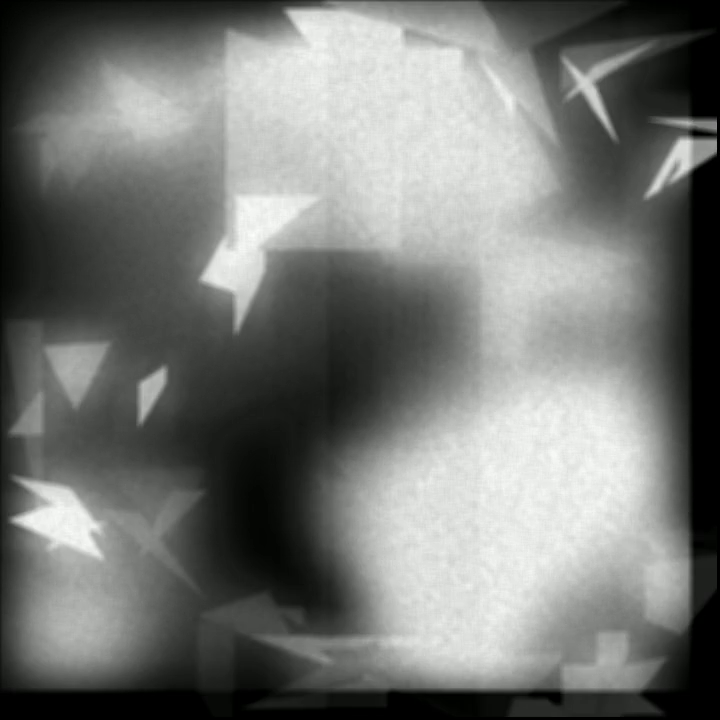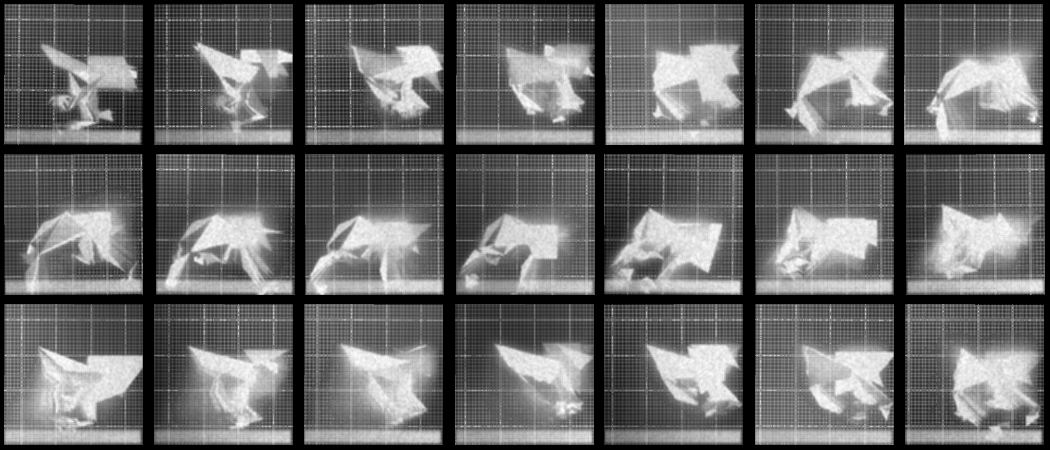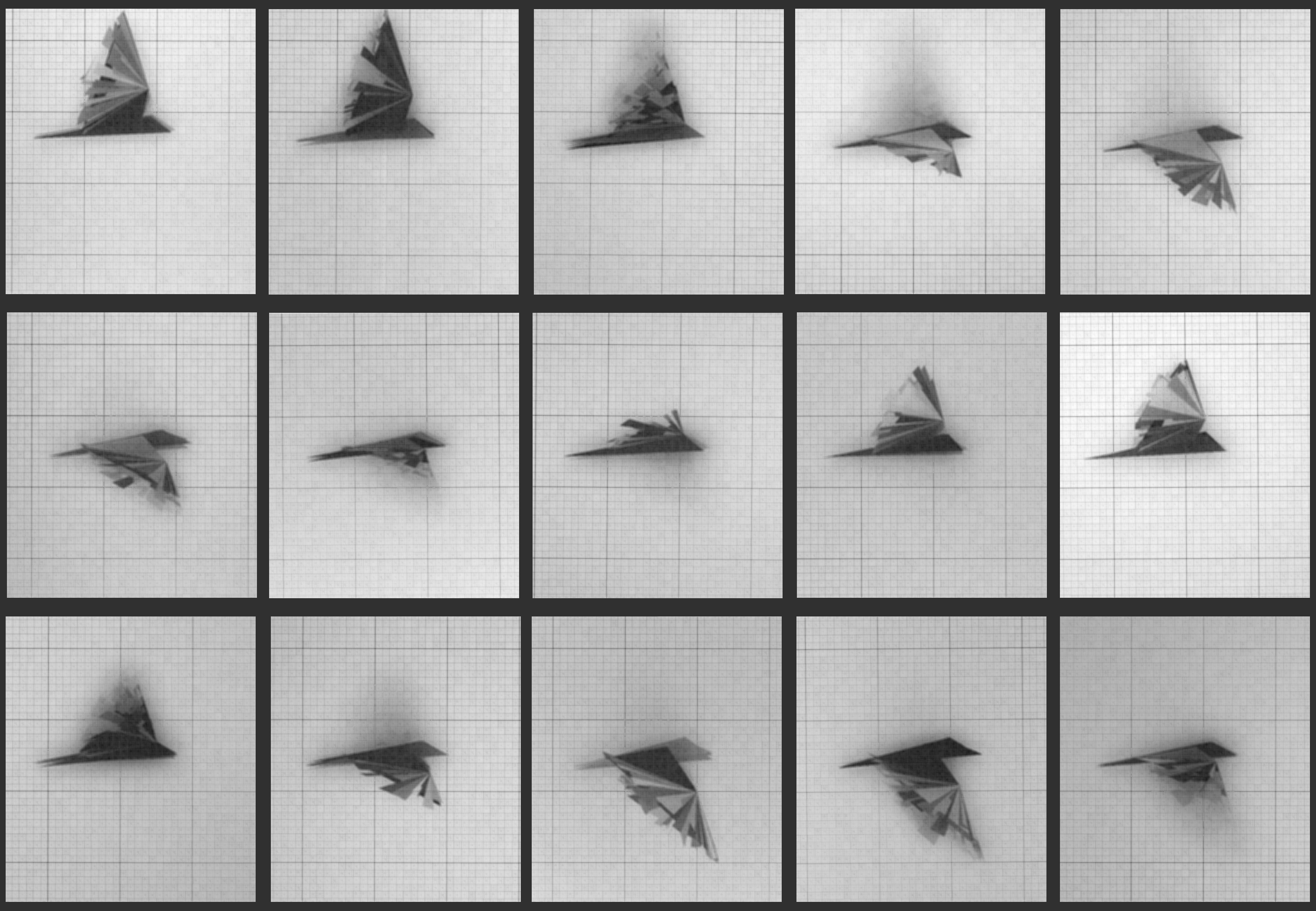Cactoid Labs curator and co-founder Lady Cactoid recently sat down with artist 0xDEAFBEEF to explore his process, the stories behind the art he currently has on view at the museum’s Stark Bar screens, and the work he is creating in dialogue with LACMA’s permanent collection for the project Remembrance of Things Future, curated and engineered by the experimental blockchain consultancy Cactoid Labs.
Building upon LACMA’s historic engagements with Art and Technology, Remembrance of Things Future is an invitation to travel via the blockchain back in time through the museum’s encyclopedic collection. Utilizing tools such as generative code 0xDEAFBEEF, alongside other pioneering artists, has been invited to select objects from LACMA and make new digital editions inspired by the museum’s holdings. Released on the blockchain in phases, a percentage of proceeds from these limited Remembrance of Things Future digital editions goes to support LACMA’s Art + Technology Lab. More information on this project can be found at lacma.cactoidlabs.io.
Hi, DEAFBEEF! Would you share with us a bit about your background, how you began using computers to make art, and where your cool name came from?
Hello! I'm an artist and engineer with 20 years of experience across various art and technology fields. My journey includes studying music, electrical engineering, operating a recording studio, publishing academic computer graphics papers, and recently, working as an artisan blacksmith, creating hand-forged jewelry. I enjoy tinkering.
As a kid in the ’80s and ’90s, I was inspired by Roguelikes, primitive games using ASCII symbols in a terminal as a map. Their defining feature—procedurally generated levels—fascinated me, introducing me to generative art and sparking my interest in programming for creative purposes.
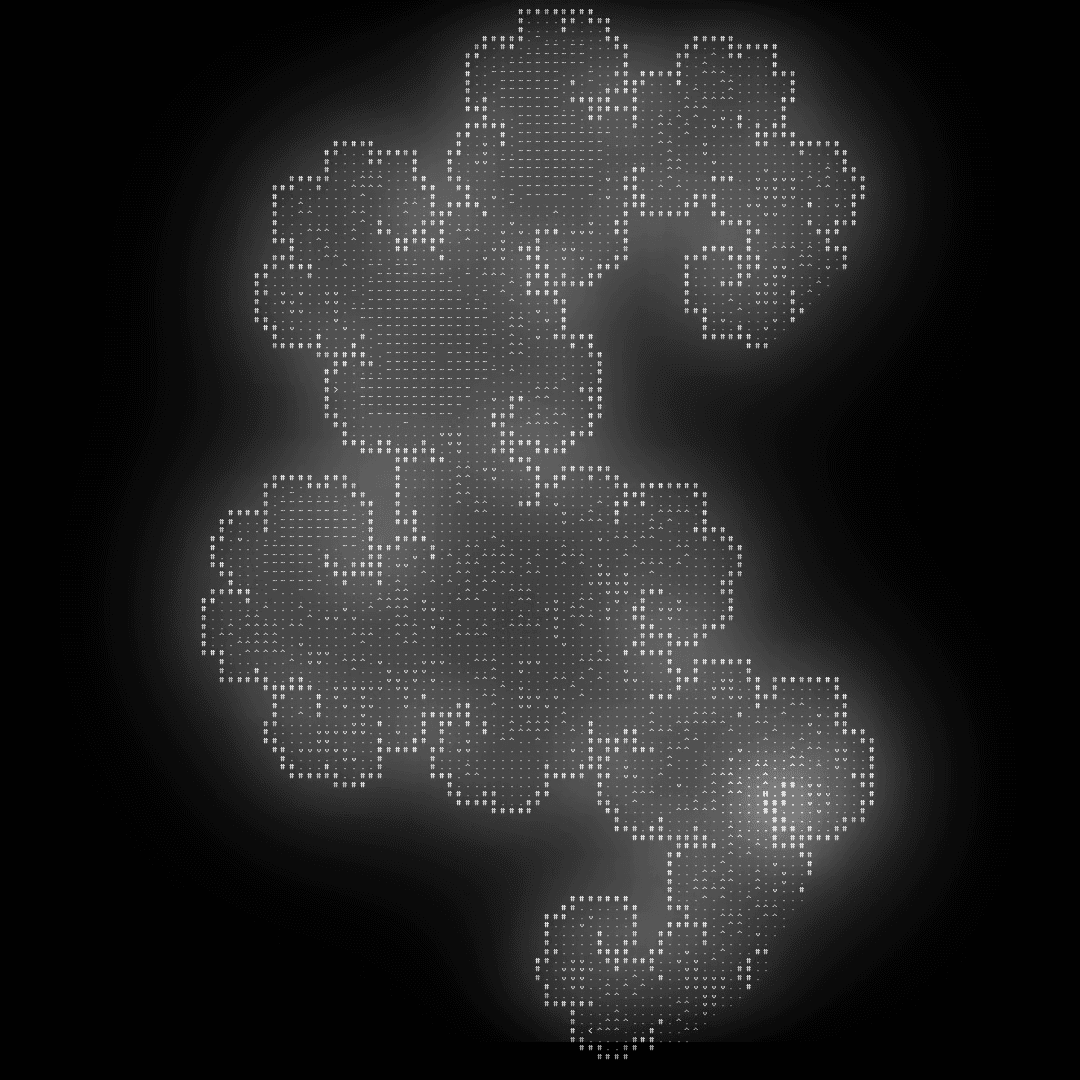
My moniker DEAFBEEF is an example of hexspeak: words using hexadecimal symbols, 0–9 and a–f, often seen in low-level programming languages like C, which I use for my generative audiovisual projects. DEAFBEEF is a unique and playful variation of the existing hexspeak word DEADBEEF with a humorous, absurd twist, highlighting programming culture and my focus on sound.
Well, I really love this name. I think of you as one of the most talented artists working on the blockchain in that you really explore the medium specificity of the blockchain (your moniker being a reflection of that) and its possibilities. Can you tell us how you code your art and why you make the decisions you do?
At one point, in the context of sound production, I decided that rather than buying more expensive equipment, why not see what I could do by starting with "nothing": using only what was on hand, a cheap laptop, text editor, and a C compiler, and my past knowledge to make strange sounds and animations that interested me.
To clarify, for readers with minimal knowledge of code, C is a low-level coding language that compiles down into the coding language Assembly, which compiles down into 0s and 1s. Compared to languages like Java Script, which is built with a higher level of abstraction and is meant to be easier for humans to write, C operates closer to the root level of computers, yes?
Yes, C is like a lingua franca, bridging human-readable instructions and machine-executable ones. My goal was a minimal, constant toolset, allowing me to hone my craft amid a fast-paced world without having to constantly play catch up to the latest software and machines. For me, this independence enables personal exploration and reclaims a sense of agency.
I'm relatively new to blockchain, but artists like Rhea Myers have been exploring it as a conceptual art medium at least as far back as 2014. In 2021, I discovered Ethereum's programmability and saw opportunities to combine generative art with blockchain affordances. For example, my piece Entropy degrades with each NFT transfer like analog media, yet its code is stored permanently on a decentralized ledger.
Synth Poems was one of the first series you created on the blockchain. In this work you use an oscilloscope, something that connects with early practitioners of computer art, like Ben Laposky, whose Oscillons from the 1950s are currently on view at LACMA as part of the exhibition Coded: Art Enters the Computer Age, 1952–1982, curated by Leslie Jones. Do you see a lineage between your practice and that of the artists featured in Coded?
The oscilloscope reference in my first series Synth Poems was a direct reference to Laposky. That reference was important to make. At the time, in 2021 with the surge of interest in generative art, there was pressure to legitimize oneself by referencing already canonized artists like Sol LeWitt. I didn't see that as a direct lineage for my practice, or many other generative art practices. From my time in computer graphics academia, I was more familiar with scientific experimentalists like John Whitney, Max Mathews, Lillian Schwartz, Ben Laposky, and Larry Cuba, as well as procedural game content and electronic music.
I see a strong connection between you and early experimentalists featured in Coded, like Ben Laposky and Lillian Schwartz. And like you, I also recall that moment in 2021 where there was a frequent reference in the blockchain space to Sol LeWitt. With that instruction-based conceptual work in mind, could you articulate the way in which your art lives on-chain and can be recreated through the instructions you detail in the C code?
Yes, storing art-making instructions on the blockchain can be seen as a nod to Sol LeWitt, but there is a more immediate reason. Due to high costs of on-chain storage, directly storing digital art files is impractical. Most NFTs, contrary to crypto values of permanence and trustlessness, point to off-chain URLs. Generative art, however, can be economically stored on-chain.
My art practice involves writing concise, self-contained systems in the C programming language, which coincidentally allows them to be stored on Ethereum efficiently, in alignment with the values of the "on-chain" art narrative. This narrative was established by earlier blockchain artworks, such as Autoglyphs (2019), and later through the Artblocks platform (2020). I store the C code on the blockchain, making it immutable and permanent as long as Ethereum continues to exist. The code is publicly accessible and can be used to recreate the artwork using only a C compiler, which is a basic, widely accessible tool. Moreover, the Ethereum network itself depends on C compilers to function, so I don't consider it an extra dependency.
As part of Remembrance of Things Future you have selected a number of early photographs by Eadweard Muybridge from LACMA’s collection, including Muybridge’s studies on animal locomotion. What drew you to these early photographs and what have you created in response?
The appeal stemmed from my interest in animation and the familiar yet enigmatic quality of these images. Even without knowing their history, they felt embedded in our collective consciousness. As I delved into Muybridge's eccentric life and his images' impact on future artists, I discovered a wealth of inspiring themes and historical context.
In response I've created two works that loosely reflect on themes related to time, consensus reality, photography and blockchain as sources of objective truth and the limitations therein.
The first is titled Noumenon, a series of generative audiovisual artworks. The generated sound and movement is amorphous and abstract, with lilting rhythms and time distortion. Visual elements are suggestive of paper cut out animation or distressed film, intended to represent, in the sense of Kant, the unknowable; the world beyond the limits of our senses. (The title “Noumenon” is a reference to Kant.)
The second collection is titled Chronophotograph, a series of images procedurally generated in reaction to the metaphorical "observation" of a Noumenon. Through an action mediated by a blockchain transaction, named “releaseShutter,” one can record a chronophotographic measurement of a Noumemon, in much the same way that Muybridge used his inventions in an attempt to transcend the limits of human visual perception.
What I find so compelling in the work you are creating here is the dialogue between photography and computers. Muybridge’s creation in the 1870s of so-called chronophotography, in which he used multiple cameras to capture the different positions in strides of moving animals, such as horses, played a critical role in both the development of photography as well as motion pictures. This was something that had never been done before. Artists from Duchamp to, funnily enough, Sol LeWitt were influenced by Muybridge’s iconic motion studies. Using code, you so magically capture Muybridge, from the measurement grid he deployed as the backdrop for his subjects, to the manner in which your Noumenon works flicker in the style of early movies, their forms vacillating like paper origami birds in flight. Then, through a mechanism you call “releaseShutter,” someone can take a metaphorical photograph of these amorphous forms depicted in Noumenon, thereby creating a Chronophotograph which functions as a still image of these moving creatures. Did I understand that correctly?
Yes, and blockchain, like chronophotography, is a time-based medium with new blocks added every 12 seconds. The block number during "observation" seeds the procedural generation of a Chronophotograph image, showcasing snapshots of forms in different phases of motion.
Chronophotograph editions are infinite, yet each Noumenal "observation" triggers a time lock, enforced by Ethereum's decentralized network. This lock doubles after each image, spanning seconds to millennia. Early images are small and blurry, but clarity and resolution improve over time. Some future images, not viable with today's technology, may become possible as computing advances.
I have been looking at the time schedule you mapped out for Noumenon and its companion series Chronophotograph. It looks like two or three days after your Noumenons are released, it will be possible to “capture” new Chronophotographs, and then again about five days later, then about nine days later. It appears that about 85% of the supply of these works will be “captured” within the first four to five years of the project. You built in a participatory dimension as well where anyone who owns a Noumenon can delegate the opportunity to capture the next Chronophotograph to somebody else. That delegated person’s wallet is registered as having taken that Chronophotograph on the blockchain. How exciting! And with each new “epoch” of Chronophotographs, the images become sharper and higher resolution. You have this all mapped out millions of years into the future?
It's fun to imagine that to be the case. There’s a culture of crypto/blockchain that values narratives of permanence and immutability. But unfortunately, it will almost certainly be broken or forgotten long before that, should humanity even exist at all. Muybridge, like many of us, has a desire to control time—to transcend limits of human senses and abilities through use of technology. And yet, limits always remain if you zoom out far enough. It's through acknowledging the frailty and brevity of our lives, accepting the impermanence of our marks and their remembrance, that one can most fully embrace one's humanity and make meaningful gestures in the present.



